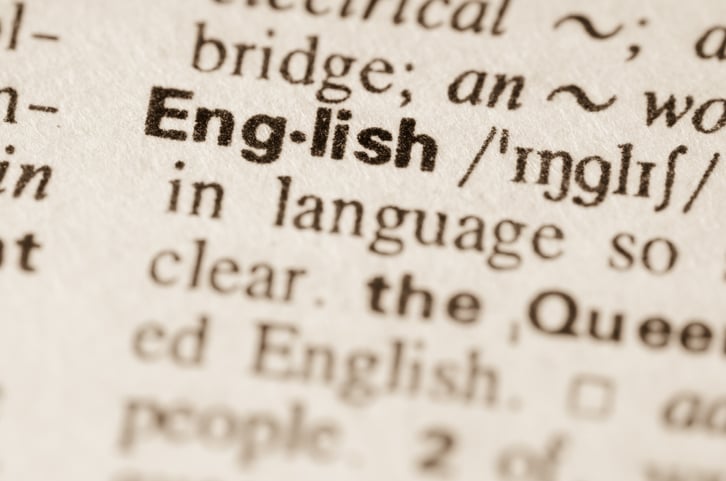

All educators are teachers of language—and engaging students in thinking about language, themselves, and society is an invaluable methodology that can confront dominant linguistic norms, center student identity, develop high-level cognitive tools, and reshape power in the classroom.
Our young people lead complex lives, and they inhabit rich linguistic landscapes. They must navigate everyday language shifts in a variety of contexts, including home environments, the workplace, peer social settings, and the classroom. And they possess multifaceted and dynamic “languaging” skills, flexibly moving across codes, dialects, and digital and social literacies and drawing on these intercultural 21st-century modalities for different purposes. But for educators to harness translingual literacy practices in a culturally sustaining pedagogy, classroom environments cannot only depend on well-chosen texts, scaffolds, or instructional methodologies. We must study, alongside students, the ways that power flows through language, our society, and our schools. Students, in all their multiplicity and abundance, need to be at the core of any critical language pedagogy. Language contains the keys to literacy, socioeconomic mobility, cultural empowerment, and equity—and unlocking the intricacies of such a foundational layer of students’ lived experiences can be a powerful tool and entry point.
We Are All Teachers of Language
I didn’t pay that much attention and I wasn’t interested that much. Llegó un punto que no iba a mis clases porque no veía proceso in mis estudios. I didn’t know great Spanish and I didn’t know great English, so it was frustrating. It gets to a point where it gets embarrassing, you know?
Mia is a senior at a large high school in California, and like many students, she has faced highs and lows of attendance and engagement throughout her school career. She has grown up in both Mexico and the US, often crossing the border on the weekends.
She sees the arc of her educational experiences as largely a result of her linguistic identity, academic self-worth, and sense of competence in relation to her social networks and the school system.
People develop their literacies in a variety of contexts, and regardless of content, we all rely on language as a medium of learning. All students are language learners, and all teachers are language teachers. Because learning requires language, language and literacies should be at the core of all educational practices, centered across subjects and disciplines.
When we fail to systematically and cohesively teach with an eye to language, we fail all of our students, not just our multilingual students. Applying strategies and perspectives gleaned from translanguaging and other language education research can increase content proficiency across grade level and discipline while also developing multifaceted linguistic repertoires. But aside from the common sense of encouraging students to learn using all of their language assets, these frameworks are a window into the hard work of unpacking and counteracting some of the harmful systems and ideologies that seek to undermine and limit our young people from developing their full potentials.
How do we understand the reasons a high school student like Mia, an emerging bilingual, felt so inadequate about her language abilities that she stopped attending school? Why are national graduation rates of multilingual learners, categorized as English learners (ELs), consistently 15–20% lower than the national average? What are the impacts of decades of policy and data around the deficits of students labeled as ELs—and how can we understand the root causes of these issues?
Assumptions about Students and Language
I didn’t learn English till I was in third, fourth grade. And later, I still didn’t know it like that. Thank God I’m not a no sabo, but I get really nervous and then my accent comes out and I just start overthinking.
Education systems—standardized achievement tests, reclassification processes, and language ideologies—can create not just an overarching landscape of deficit thinking but a series of active, immediate obstacles that blare a repeated message of correctness, standardization, and monolingualism. Language, in society and in schools, functions as proxy for race, social class, geography, and a myriad of other social markers (Flores and Rosa, 2015). Language has deep historical legacies that tie directly to migration, colonization, genocide, and slavery—and dominant views on the correctness of language are largely the result of “othering” ideologies.
Acceptance into social networks, including familial ones, is often linked to linguistic proficiencies—hence Mia’s fear of being labeled a no sabo (a term for a Latinx person who lacks full fluency in Spanish and is viewed as not only linguistically but culturally deficient). These ideologies run deep in the fabric of our society: through family and social networks; media, language, and migration policies; and of course our school systems.
Embedded in these ideologies of strict borders between languages are raciolinguistic ideologies that demand a hierarchy of language, dialect, and code and are inextricably linked to the hierarchical boundaries of race. Our language-minoritized students are racialized and categorized in relation to an imagined White, middle-class, monolingual ideal in ongoing and systematic ways (Flores and Rosa, 2015). For instance, students whose families report that they speak any language other than English are labeled as ELs and must prove that they have overcome assumed deficits in English, while the rest of their linguistic assets are not documented or validated and their counterparts labeled English only (EO) are never subjected to the same assessments.
Culturally sustaining pedagogies reject the framing of students as failing and instead look at the ways that the system is failing our students (Paris and Alim, 2017). A critical examination of linguistic and cultural hierarchies must happen with our students at the center: as they study the relationship between power and language, young people develop their analytical and linguistic skills and their overall cognition in empowering, sustaining ways. This analysis should look relationally inward and outward, studying the self and at the same time the overarching linguistic hierarchies in our society—and often in our classrooms—and where these hierarchies come from.
Assuming that the goal of multilingual students is to become more like monolingual students is an aspiration to a fictitious ideal. Linguistic development is not linear and does not result in monolingualism, nor do we serve our language-minoritized students by positioning them as outsiders to a worldview that, regardless of their actions, marginalizes them. As students navigate linguistic landscapes, they are often adept not only at code meshing (skillfully incorporating dialects and languages into academic spaces, and thus interrogating the notion of what is “correct” or “appropriate”) and translanguaging (drawing on different linguistic resources to make meaning and make sense); they are also adept at brokering contradictions and fissures that occur across borders. Often metaphorical and literal borders are sites of unstable and unequal power relations, and our students need the skills to navigate these borders in ways that protect themselves, their communities, and their loved ones (García-Sánchez, 2018). Our school systems and classrooms must take seriously the development of linguistic repertoires that equip our students to navigate these everyday challenges.
Often, educators and systems look at translanguaging as a scaffold: that is, they understand it only as temporarily using the students’ home languages and dialects to better acquire dominant English. Instead, the education we provide students must leverage their existing repertoire and encourage the appropriation of new linguistic features (Selzer and García, 2020).
A simple additive, “all cultural linguistic practices are equally valuable” approach in our classrooms and schools is unfortunately insufficient, because it does not critique or seek to understand the systems that label such large swaths of our students as inferior. A vision of culture, ethnicity, and language as fixed contributes to the oversimplification of cultural practices (i.e., cultural days centering on ethnic foods rather than people, histories, or cultural dynamism) and limits our ability to develop students’ skills. We cannot assume fixed relationships between language, ethnicity, culture, and class, as they vary depending on context; these relationships are continually shifting, and young people are continually adapting.
If we see culture as static, it can be easy to justify an instructional emphasis on dominant English as an explicit teaching of the culture of power (and thus the language of power) (Delpit, 1988). Instead, our schools can better position students to understand power and its relationship to language.
If we cultivate rigorous environments that interrogate power and linguistic hierarchies, students will deepen their navigational and analytical abilities and improve their languaging skills. By encouraging the appropriation of new features into young peoples’ repertoires, we can help them move across linguistic and cultural borders more fluidly, adeptly, and skillfully (Seltzer and García, 2020). Students like Mia need support and validation to stay the course, rigor and engagement to develop as independent language learners, and aligned schools to strengthen their critical thinking and cognition as they continue to stretch and grow across shifting linguistic borders.
By the time many language-minoritized students make it to high school, their linguistic experiences have already created deep wounds and entrenched beliefs of competence and incompetence, adequacy and inadequacy, success and failure. Broadening our view and keeping students at the center of countering these harms is a Herculean lift, one that requires effort, delicacy, collaboration, and time.
Centering Students in Critical Language and Translingual Literacies: There Is Time
I felt more confident and I started paying attention in class and it became more interesting. It’s not just about language, but it’s about how to express [myself] and ways to use it. Language and dialect are used to discriminate against people. But language can also be tied in with education, and education can escalate your status in society… So now I feel like I’m at a level where I’m actually proud of what I be writing, and I feel like now, I’m confident enough to say that I’m ready for the next steps. I’m ready to take more classes. I’m ready to do more challenging stuff in school.
Creating an ecology for flexible language use is not a one-size-fits-all approach. Students have unique linguistic repertoires, so bringing their languages and identities into the classroom as objects worthy of study is not just culturally sustaining but also positions schools to directly serve students and their futures. The urgent task of school systems is to support the evolving and shifting linguistic practices and needs of young people, and this demands a vertical and horizontal alignment in language and literacy practices. The work of rethinking language in schools must be prioritized, and because teaching language is central to the mission of all educators, we must develop a critical, sustaining language vision together. Our globalized world demands so much of our young people: diverse and fluid intercultural communication skills, precision and wisdom in brokering systems, and adaptability to face and alter their lived realities. Teacher education and professional development must provide all teachers with opportunities to strengthen student-centered and content-integrated language instruction, but educators also need ongoing spaces to analyze the current measures of linguistic proficiency and seek to understand their students’ continually evolving linguistic and cultural practices. Policymakers and districts should understand that strong, effective literacy development for all students goes hand in hand with critical and sustaining language education. We must invest in building a bold and dynamic shared vision.
Let us approach our school systems from the position that there is time enough for the things that matter and for the world that our students are already living in. By 2025, one out of four students in US classrooms will be an EL student (National Education Association, 2020), and experts estimate that at least half of the global population is multilingual. We want our students to be shapers of the world, not only to pass through gates of power by demonstrating proficiency in narrow terms.
The goal of a critical language practice is not for our emerging bilinguals to aspire to a monolingual ideal, but rather to help all students dismantle the fiction of the ideal in the first place and build a much sturdier tool kit with which to move through the world. Our young people have incredibly diverse skillsets which they already use to navigate borders, challenges, and possibilities in an increasingly multilingual world— the question is whether our education system’s policies, districts, administrators, and teachers will rise to the challenge of supporting and sustaining them.
References
Delpit, L. (1988). “The Silenced Dialogue: Power and pedagogy in educating other people’s children.” Harvard Educational Review, 58(3), 280–298.
Flores, N., and Rosa, J. (2015). “Undoing Appropriateness: Raciolinguistic ideologies and language diversity in education.” Harvard Educational Review, 85(2), 149– 171.
García-Sánchez, I. M. (2018). “Children as Interactional Brokers of Care.” Annual Review of Anthropology, 47, 167–184. National Education Association (2020).
“English Language Learners.” www.nea.org/resource-library/english-language-learners
Paris, D., and Alim, H. S. (2017). Culturally Sustaining Pedagogies: Teaching and Learning for Justice in a Changing World. Teacher’s College Press.
Seltzer, K., and García, O. (2020). “Broadening the View: Taking up a translanguaging pedagogy with all language-minoritized students.” Educational Linguistics, 45, 23–42.
Marika Iyer is an educator and lecturer based in Oakland, California, who thinks and writes about language, literacy, culture, and schools. With over a decade of experience working in urban education with multilingual and language-minoritized learners, she seeks to put sociolinguistic research into the hands of today’s teachers.














